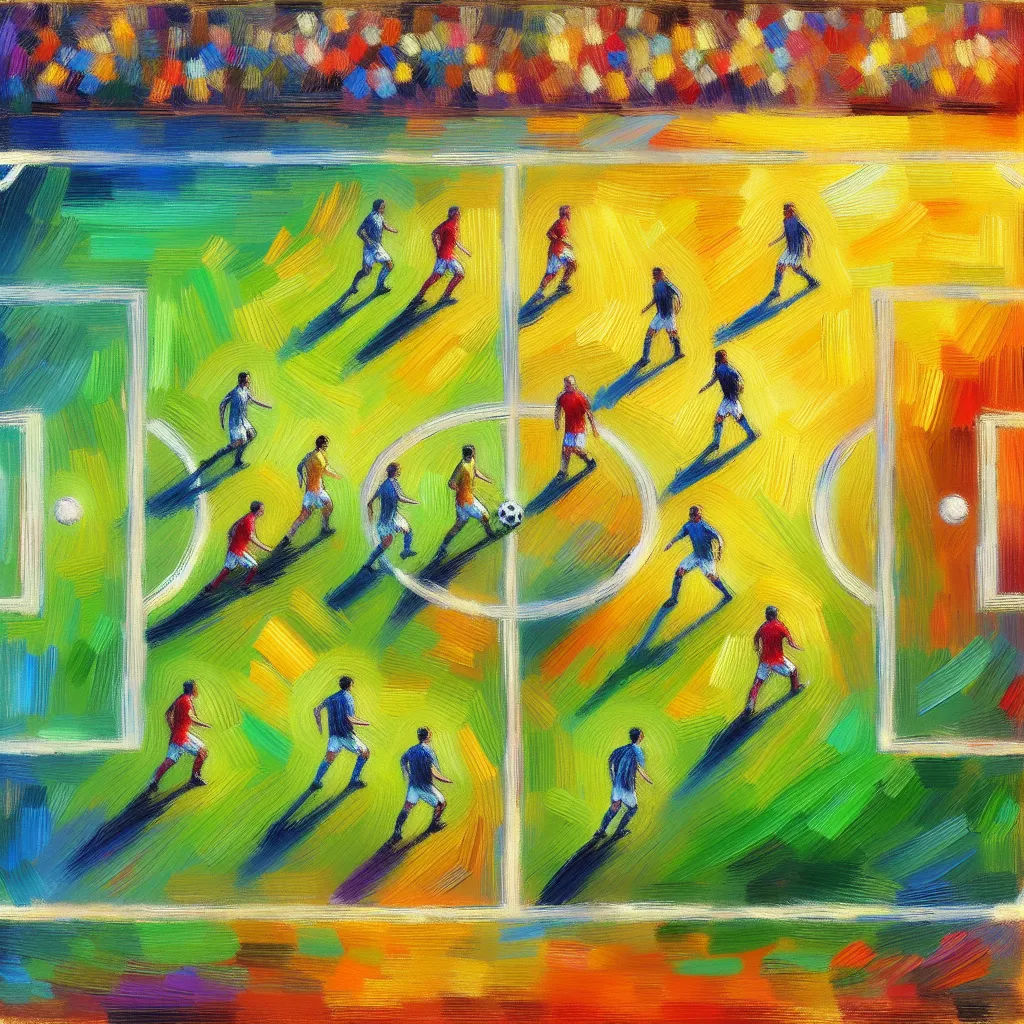
- Published on
- Authors

- Name
- Sports Tips
The 4-1-3-2 Formation: Balancing Defense and Midfield Creativity
Soccer formations are the bedrock of a Teams tactical approach, and among the myriad options, the 4-1-3-2 formation stands out for its unique blend of defensive solidity and midfield creativity. Understanding this formation can unlock a wealth of strategic possibilities for both players and coaches.
Formation Breakdown
Key Elements of the 4-1-3-2
| Position | Role Description |
|---|---|
| Goalkeeper | The last line of defense, commanding the penalty area. |
| Back Four | Two center-backs and two full-backs to maintain a solid defense. |
| Holding Midfielder (CDM) | Acts as a shield for the defense, breaking up opposition plays. |
| Central Midfield Trio | Comprising a mixture of attack-minded and box-to-box roles, ensuring fluid transition. |
| Two Forwards | Constantly press the opposition defense, looking for scoring opportunities. |
Defensive Solidity
The defensive structure of the 4-1-3-2 provides significant benefits:
- Compact Back Four: The two center-backs work in tandem to cover central areas, while the full-backs can engage or retreat as needed.
- Holding Midfielder's Role: Positioned just ahead of the backline, this player intercepts passes, wins tackles, and shields the defense.
- Zonal Coverage: The formation ensures that the team maintains shape, preventing spaces for the opposition to exploit.
Coaching Tips for a Solid Defense
- Communication: Encourage your backline to consistently communicate and stay aware of their zones.
- Positioning: Teach your holding midfielder to read the game and position themselves to cut off passing lanes.
- Drills: Implement drills focusing on defensive transitions and situational awareness.
Midfield Creativity
While defensively robust, the 4-1-3-2 doesn't lack in creative flair:
- Triad Flexibility: The three midfielders can adopt varied roles—one might play a traditional number 10, while others shuttle between attack and defense.
- Possession Play: The formation lends itself well to short passes and possession-focused football, allowing for quick transitions.
- Width Utilization: Full-backs can push forward to provide width, particularly when the midfielders congregate centrally.
Player Tips for Midfield Creativity
- Vision: Central midfielders should always scan the field and anticipate their next move.
- Quick Passes: Keep the ball moving with short, decisive passes to disrupt the opposition.
- Dual Roles: Train midfielders to be comfortable both in defensive duties and attacking forays.
In-Game Adjustments
Adapting the 4-1-3-2
| Scenario | Adjustment |
|---|---|
| Facing a High Press | Instruct the holding midfielder to drop deeper, helping the defense maintain possession under pressure. |
| Chasing a Goal | Push one of the central midfielders higher up to support the forwards, effectively becoming a 4-1-2-3. |
| Defending a Lead | Drop the wingers back to form a flat 4-4-2, adding extra bodies in defense. |
Final Thoughts
The 4-1-3-2 formation is a dynamic and versatile setup, capable of providing a formidable defensive structure while fostering creative midfield play. By understanding its nuances and preparing both players and coaches to maximize its potential, teams can leverage this formation for various in-game scenarios.
Take these insights to the pitch, and watch your team execute a balanced, thrilling brand of soccer. Keep the lines of communication open, remain adaptable, and remember—soccer is a game of creativity as much as it is one of strategy.
Got more formations on your mind? Check our Soccer Strategy Series for in-depth analyses of various tactical setups.
